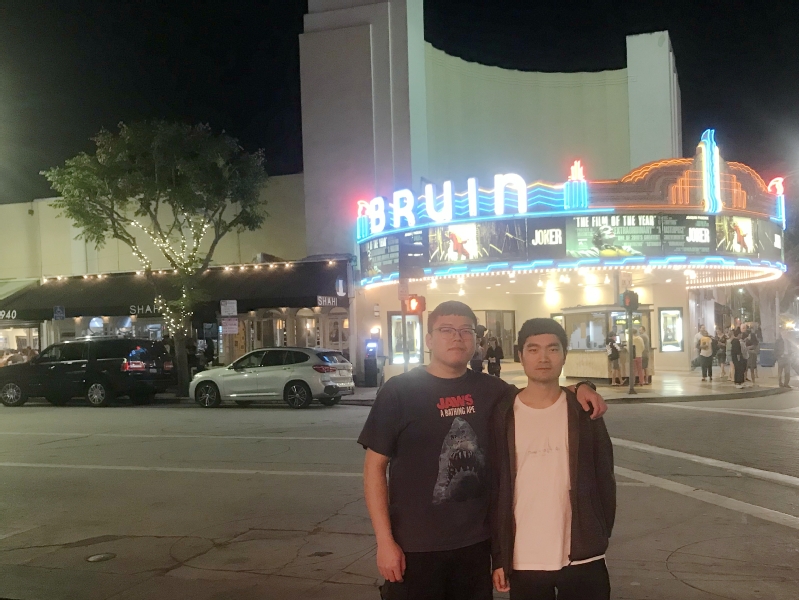Editor: 邵丹蕾 Author: Time: 2020-03-16 Number of visits :282
Student XU Liuwei went to the University of California, Los Angeles (UCLA) for more than 4 months of research internship. He shared his unique experiences:
In early March last year, I contacted my instructor Lingsen Meng by email and successfully passed the online interview.This internship program is a global effort to detect shallow-source super-shear strike-slip earthquakes.
The phenomenon of super shearing is highly concerned by academia and is one of the most cutting-edge research topics in the field of natural seismology. Super-shear means that the rupture velocity exceeds S-wave velocity, and the super-shear earthquake refers to an earthquake where the propagation velocity of rupture on the fault exceeds the shear wave velocity. Once a super-shear earthquake occurs, it will generate a strong vibration, and if it occurs near the surface, it may produce a stronger destructive force than a normal earthquake. The main target of this project is a shallow source (depth <50 km) super-shear earthquake with a walk-slip nature.
Thus, I made full preparation: after getting in touch with my instructor in March, I asked for the classic textbook of natural seismology and started to study the topic myself. In June, a few doctoral students of UCLA supervised by Lingsen Meng contacted me and sent me papers on seismic arrays, back projection, and super-shear earthquakes during the internship.
In July, in the first few weeks after arriving at UCLA, I mainly focused on learning software and programs, such as Python and Obspy modules. The project officially started in August and lasted until December. During this period, I analyzed 71 large strike-slip earthquakes from 2000 to 2019 and found six unreported super-shear earthquakes. I was mainly responsible for the theme work of the project. At present, my collaborators are preparing scientific research papers, and the results are expected to be published in top international journals.
During my 4-month stay at UCLA, I actively participated in the academic activities within the department of earth, planetary and space science, including the academic reports organized by the department every Wednesday, the weekly meeting of the tutor's research group, the personal meeting with the tutor, and the attending the tutor's course Introduction to Seismology. I also participated in the 2019 Southern California Earthquake Center Annual Meeting 2019 held in Palm Springs, and communicated with scholars in the field of seismology. When Lucia Gualtieri, an assistant professor at the School of Earth, Energy and Environmental Sciences at Stanford University, visited UCLA to give an academic report, I took the initiative to introduce my recent scientific research work and expressed my desire to join his research group for postgraduate study.
I learnt a lot and gained a lot during this internship. Not only did I learn the cutting-edge knowledge of seismology, and carried out related scientific research work; After the internship, my knowledge and skills basically reached the level of the graduates in the major of natural seismology, and mastered the Linux system and Python. The four-month laboratory life has allowed me to witness and experience the study and scientific research life of doctoral students, and to meet a group of enthusiastic friends and scholars, laying a good foundation for my further study.

Southern California Earthquake Center Annual Meeting 2019

Volunteer at UCLA campus open days

Xu liuwei (on the right) with his UCLA roommate
